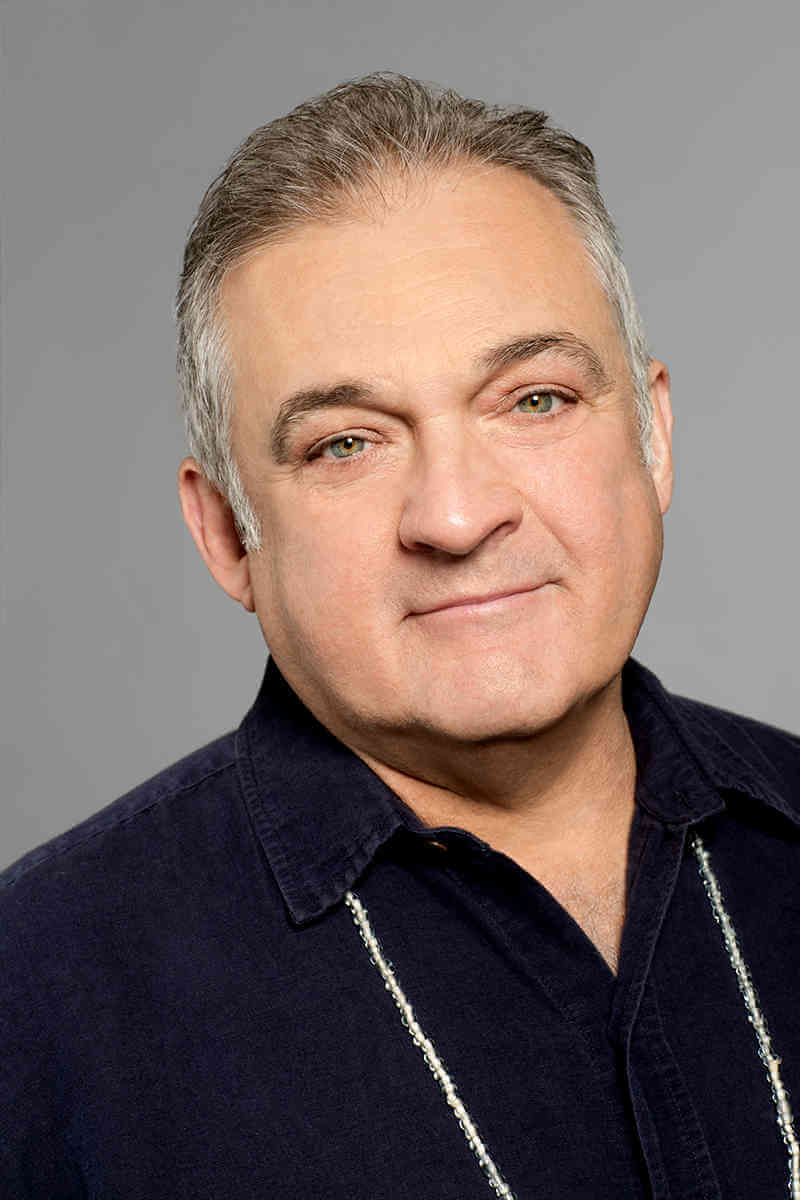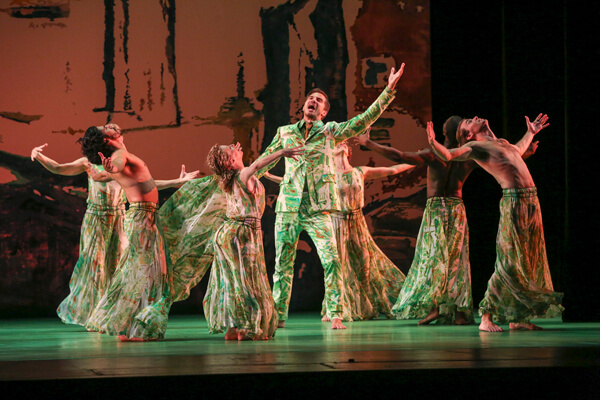Mark Morris’ just-published memoir “Out Loud” — which impressively manages to make adept use of the word “eggshelly” — charts the 63-year-old choreographer’s life’s from his childhood in the Pacific Northwest through his amazing ascendency to become arguably the most recognizable choreographer of our time.
This October saw his company, the Mark Morris Dance Group, perform in the 16th annual Fall For Dance Festival at City Center; his 2007 production of the Gluck opera “Orfeo ed Eurydice” runs at the Metropolitan Opera though November 10; and his company’s production of “Pepperland,” celebrating the 50th anniversary of the Beatles album “Sgt. Pepper’s Lonely Hearts Club Band,” will be at Washington’s Kennedy Center November 13-16. In December, “The Hard Nut,” his now classic reimagining of “The Nutcracker,” will be presented by the Seattle Theatre Group.
Morris has always been a busy bee. His Fort Greene, Brooklyn-based Mark Morris Dance Center is the official home of his company, but also functions as an incredibly vibrant community center, offering dozens of classes a week to professional dancers — and to adults and kids from the community, as well — almost all of them presented with live musicians, since 1996. Morris himself is often called a musician, not because he plays an instrument but because his connection to musical texts from cultures all over the world is so profound. The New York Times once dubbed him “the most artfully musical choreographer alive.”
Morris’ friend the composer Nico Muhly told me, “Before I’d seen Mark’s work, I never understood the power of a choreographer to simultaneously translate, illuminate, and transform a score. When I first saw his ‘L’Allegro,’ I felt as if I’d found an extra room inside my apartment.”
In the new memoir, co-written with author and musician Wesley Stace, Morris reveals himself as deeply feeling, funny, and not a little fabulous. I asked his bestie Isaac Mizrahi to tell me about Morris as a fabulous homosexual and in an email he wrote back with a few quirky zaps of insight: “I don’t see Mark as a straight or a gay artist. I see him as a great artist whose work speaks to everyone. The greatness of Mark’s work is how the gay themes that do appear are so well integrated into the body of the piece in question. I can’t think of one of his dances that’s ONLY about gay themes. He is a fabulous homosexual because whilst being radical (relatively, for his time), he manages to live in the world that exists. Weirdly, I think of him more as a feminist than as a fabulous homosexual, though he is that. I think of Mark more as a woman, as a friend to women than anything else.”
Sanjoy Roy in The Guardian wrote, “Mark Morris is equal parts diva and democrat — a big, mouthy guy who dominates his company but also likes his dancers to be individuals. He is one big bundle of contrasts: louche and refined, old-fashioned and avant-garde, spiritual and spunky.”
Here are excerpts from my recent conversation with Morris.
CHRISTOPHER MURRAY: Why did you write the book?
MARK MORRIS: Somebody had to. The last book about me was Joan Acocella’s from 1993, “Mark Morris.” That went up to the end of my time in Brussels. There’s another half of my life so far which hadn’t been covered. I met Wesley with whom I wrote it and we hit it off. He said, “Your stories are interesting,” which was nice because people I know have heard them all so many times. We really worked on the whole thing together. It was very much collaborative.
MURRAY: What do you want people to get out of the book?
MORRIS: I can’t decide that. What they should get out of it is the story, which is my story. I have a pretty interesting life and history. I’m direct and frank, hence the title. [Laughs.] It’s a doorstop if anything. I want people to get out what I put in. It’s me in this scene. There aren’t a lot of choreographers for one thing, so they all have a different perspective and this is mine.
MURRAY: It’s so impressive that you have been able to build your building, the Mark Morris Dance Center. You stand pretty much alone as a working choreographer in that. It’s such a community center. I was very glad to tour it and see how much life and excitement and connection to the community it has.
MORRIS: Oh that’s just great. A lot of people don’t know that. Legacy enough is this building and the school. To leave the book and some other stuff is good. And I’m not dying anytime soon.
MURRAY: So, what do you consider your gay artistic lineage?
MORRIS: I don’t even know, because how do we know from history who was gay? Joan Acocella’s book talks about me in my 20s, coming out to anyone who would listen. I did that at the time because, well, for one thing, I was so obvious, but also because not everybody was as confident or comfortable or felt able to come out. I knew a lot of dancers and choreographers, specifically gay men, and everybody was kind of gay, but there was that stigma. And I just said, “I’m gay, what’s the problem?” And now I don’t care. That battle’s over. If people are interested in that history, they can find out more of the development of queerness and feminism that for me was dyed in the wool. I’m gay and proud but I’m also gay and ashamed from time to time, just like any person.
MURRAY: In the book you say, “Every solo I made up in the first part of my career was a humiliation dance in one way or another.”
MORRIS: It was partly to make it not funny and not beautiful, and also not easy to dance. I was trying to get rid of the prince and the princess and the white tights, all of what I was hating about classic ballet. I love ballet — I’m not opposed to it in any way — but I was responding to some of those conservative stereotypes.
MURRAY: One of things I enjoyed most about “Out Loud” was reading next to my laptop so I could be looking up and listening to all the wonderful musical references to everything from early Western classical music to classical Indian music, Eastern European folk traditions through the 20th century avant-garde.
MORRIS: Oh, that’s great that you did that! I’m surprised to hear that. That’s delightful!
MURRAY: What kind of art do you think we need right now?
MORRIS: Good art. [Cackles.] Strictly political or propagandist art rarely works for me. You don’t have to turn every character into a political figure from the news. If something has the power to touch our senses as we read, observe, or even taste it, then it will have relevance. My field is dance and music. People decide for themselves, personally, what the relevance of my work is to them. My job is to present it. You might not like opera or broccoli, but have you ever been to one or tasted it?
OUT LOUD: A MEMOIR | By Mark Morris and Wesley Stace | Penguin Press | $30 | 384 pages

































